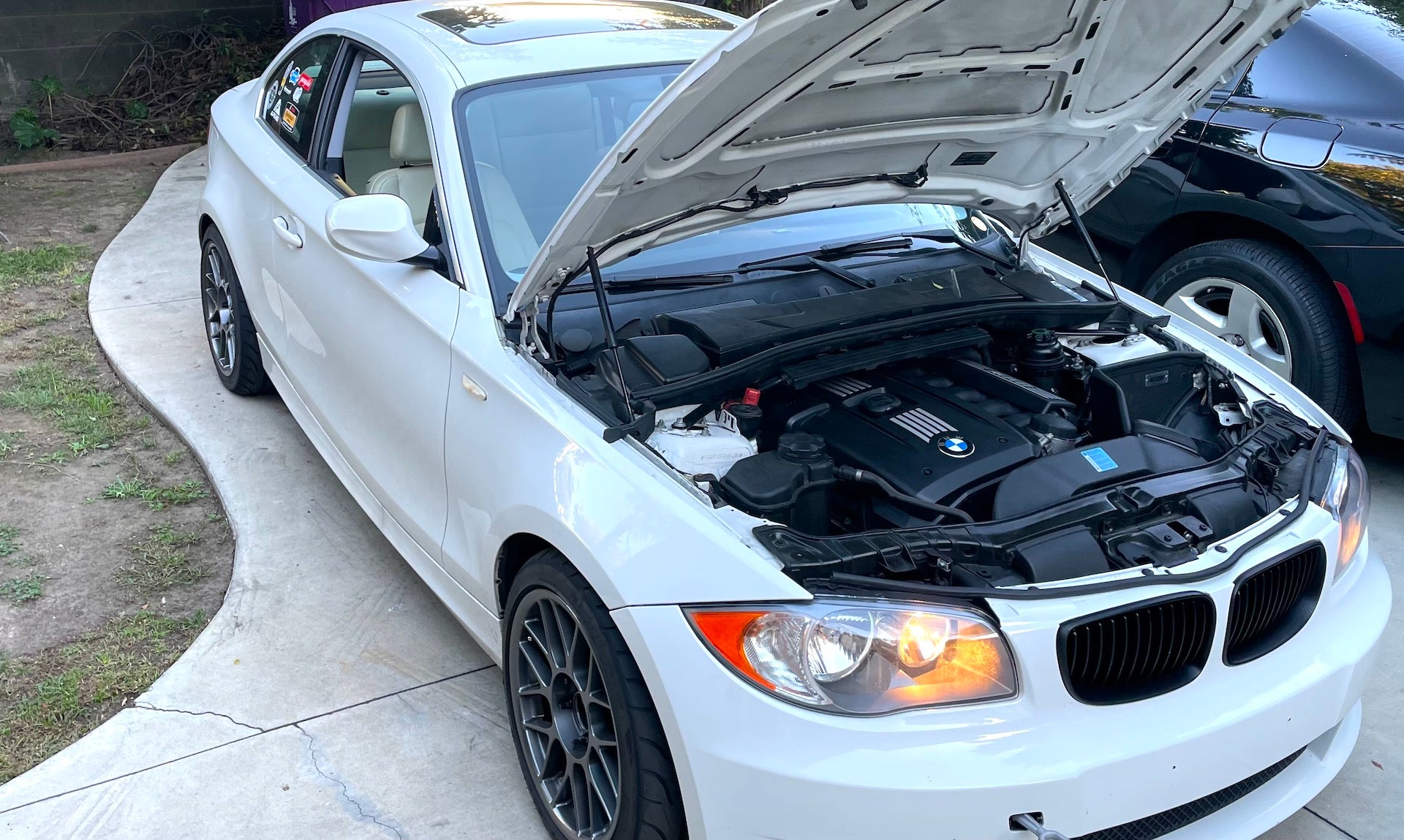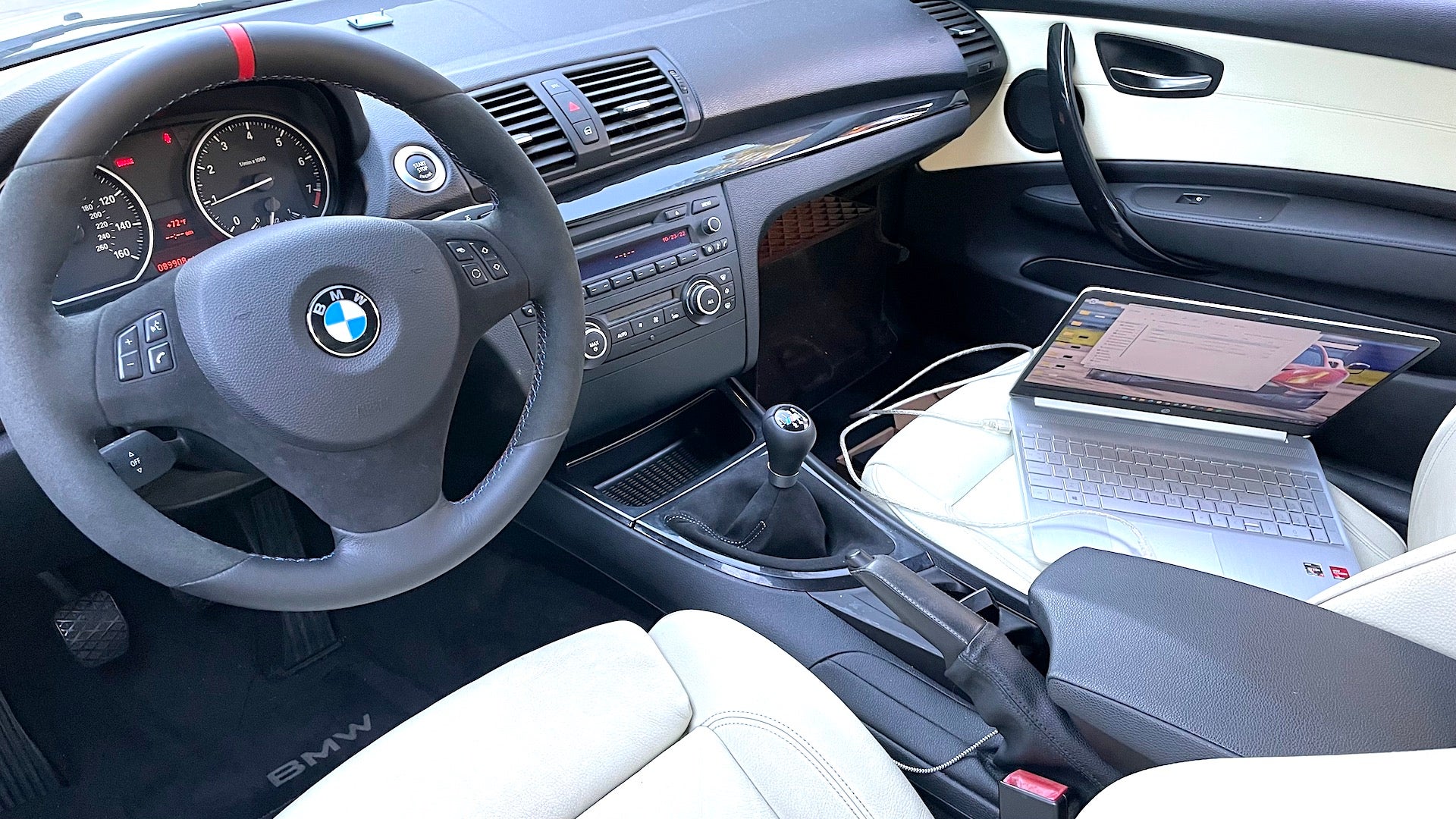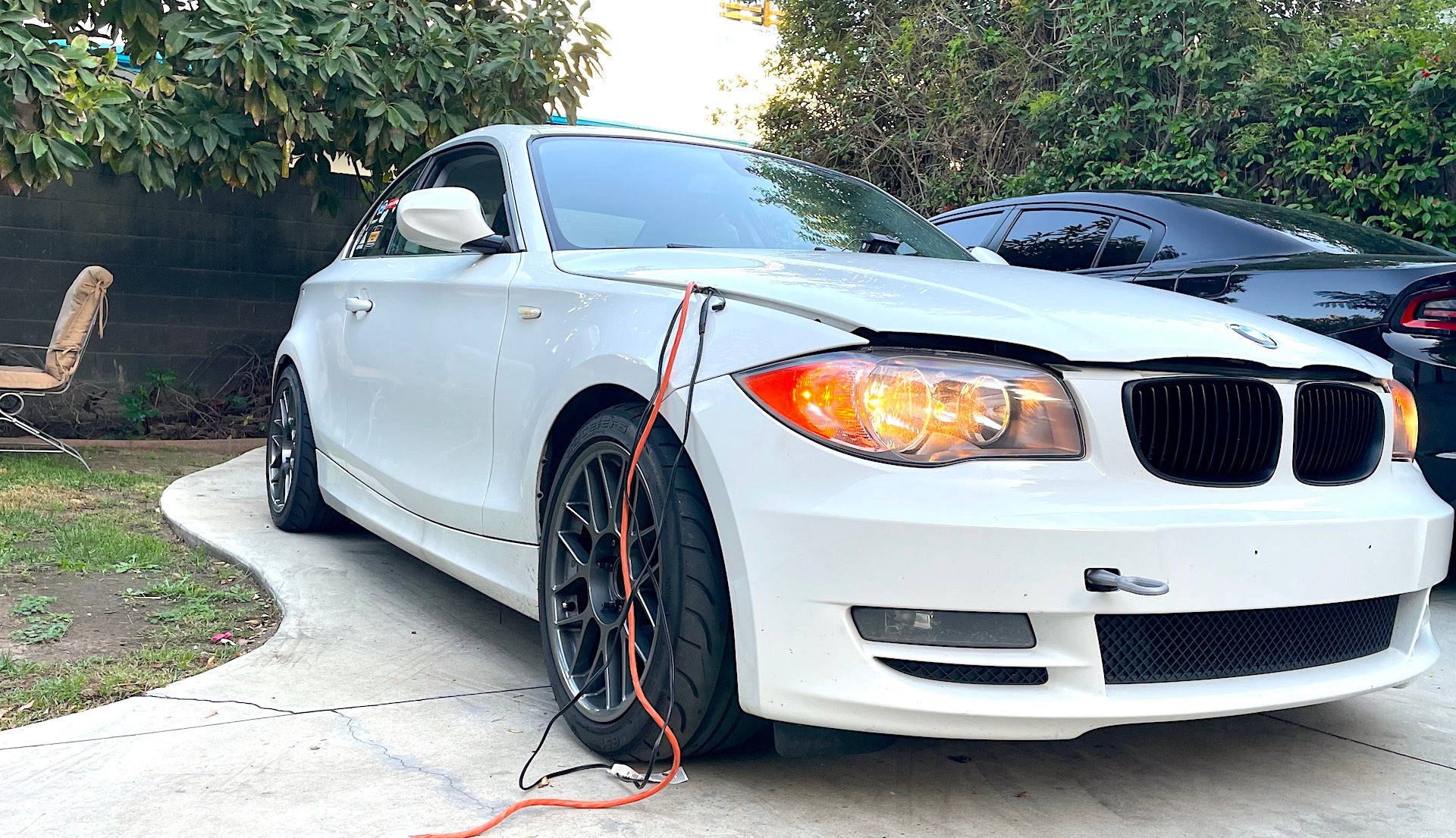Previously, I took you through the process of installing a junkyard-sourced three-stage intake manifold (TSIM) into my 2011 BMW 128i project car. And with a little research and planning, the whole process was immensely straightforward and easy to accomplish, despite being on the lengthy side and in tight quarters. Plus, I didn't break anything important during the installation, which is always a win.
Once the physical part of the job was complete, I had another challenge: tuning the car. Here's how it went, and how a few hiccups were solved with the most basic troubleshooting.
The Drive and its partners may earn a commission if you purchase a product through one of our links. Read more.

The Initial Test Run
Enthusiasts shared on forums that the manifold matched with factory 128i tuning was a minor upgrade as-is, though I never found any conclusive, dyno-driven evidence to support this. But pre-tune, the Bimmer was running brilliantly. It seemed to run healthier than ever, and even a tad more powerful.
However, I was in this for the real reward. That meant flashing the DME (aka ECU in BMW speak) with a factory BMW 130i tune which helps my car produce figures near 260 horsepower and 229 pound-feet of torque against my lowly 230 and 200 stock numbers. I already had all of the necessary dealer service software, and a cable after turning off track-unfriendly nannies, all I'd have to do now was use the right flash tune.
Bimmerlabs makes this incredibly easy and free of charge. In fact, they offer the 130i tune as a batch file, meaning as long as your software settings are in order, you just open the file, press any key a few times, and Bob's your uncle. Well, I'm saying that now after a very healthy helping of troubleshooting.
Here are two screenshots from the batch files. The second is from when the batch file failed—needless to say "fatal error" is alarming language. Peter Nelson
Setting Everything Up
The first step was to put my car on a battery tender so that it wouldn't drain during the flashing process.
After a few initial error messages that were resolved by switching the physical button on the CAN cable itself, the batch file finally started the initial flash to unlock the DME. That win didn't last long, however, as another error message came up and put my car into a weird state. While the windows, ignition-on switch, and other minor things worked fine, the car wouldn't crank and wouldn't stop priming the fuel pump with the key on.
A light freakout over potentially bricking the ECU followed, but I then went deep into troubleshooting. The forums seemed to agree that it's hard to wipe the car's brain with a batch file and that I should ensure my dealer service program used for flashing, WinkKFP, was in good order. I verified that I had all applicable files in the right places and tried again. Yet another error arrived.
While fiddling around a bit more, ensuring that my cable settings were still what they were when I deep-coded the car two months prior, I found the culprit. The settings that I thought were saved, weren't. An easy fix and for the record, the two settings that had somehow gone awry were the com port and latency timer settings. This time the flash lasted a whole 21 minutes, which was on par with peoples' experiences I'd read about.
I then flashed the 130i tune, which took no more than a minute. Overjoyed, I cycled the key and hit the starter which now cranked, but very slowly, and the car faded away. The gauges then went dark and I couldn't activate the windows. A mild freakout returned, so I went back into my apartment to seek a solution.

A Light Bulb Lights Up
Back at it, the car acted more normal, but it still wouldn't fire. Even after jumping it with the help of my buddy. Underneath the hood, a visual inspection revealed that the intake boot between the throttle body and mass airflow sensor was loose, so I reattached it and attempted to refire it. Again, nothing.
Some light multimeter usage revealed that the battery was producing 11 volts at best, which seemed low, but not low enough to cause such issues. Pulling error codes revealed as many as 16 different codes, with most of them being rooted in low voltage. I also had a fuel module error, which made me think that I could've roasted it with the fuel pump priming for so long.
I decided to start at square one. 11 volts is too low, just buy a new battery. A $220 visit to my favorite O'Reilly location later, and it still wouldn't fire up. However, the car did seem more normal.
Finally, a big, bright light bulb lit up: just reflash the 130i tune. I now knew for sure that I was getting a sturdy, solid flow of electricity with a fresh battery hooked up, and I'd read that the opposite can wreak havoc on flashing/coding, trickle charger or not.
I ran the batch file, cycled the key, and it fired up with all the gusto. My reaction was a cross between this and this.

Lessons Learned
All of the mild pain and suffering I experienced over the course of 24 hours could've been avoided if I'd ensured the BMW's battery was in top shape and that my CAN cable's settings were correct. Regarding the battery situation, when I posted my laments to The Drive's slack, my colleague Jonathon Klein called it. It's important to start simple and make sure the basics are taken care of before letting your imagination run wild. Don't turn it into a rousing evening on WebMD. Especially when I got that pesky fuel module CEL that could've cost me $300 if I'd impulse-bought a brand-new one.
I had a feeling that I was in the clear during the final flash when the fuel pump stopped priming, perhaps something to keep in mind the next time I go fiddling around with stuff where I really ought not to.
Though, I'm really glad I did indeed do all this fiddling around as, my God, is the 128i a different car now. Throttle response is much sharper, it revs far faster, and it just feels all-around more powerful. At first, I thought it was a tad laggy low in the rev range for how much throttle I was laying on. But no, that was just traction control. A very-near-future visit to the dyno will prove what kind of numbers I've gained, but the thing feels much more enthusiastic. Not bad for less than $250 and a new battery that I really should've thrown in there months ago.
If you're interested in doing it yourself, approach at your own risk/read up on Bimmerlabs' resources and other owners' experiences, and be mindful of any emissions complications. Because it's a factory tune—the same tune that's in the stock E9X 330i, in fact—I might be in good shape, but it's definitely a concern for when my car is up for emissions inspection.
More From The Autance
- Chris Tsui drove the new BMW 7 Series and i7 EV and they're swankier than ever
- James Gilboy has some fun information to share about Donut Media in the new Forza Horizon 5
- Aaron Cole reports that VW and Audi are recalling nearly a quarter-million cars
- Caleb Jacobs has an update on the epic NASCAR wall ride that went down a few weekends ago
- Chris Rosales shares how brutally tough Ken Block's stunts are to perfect











